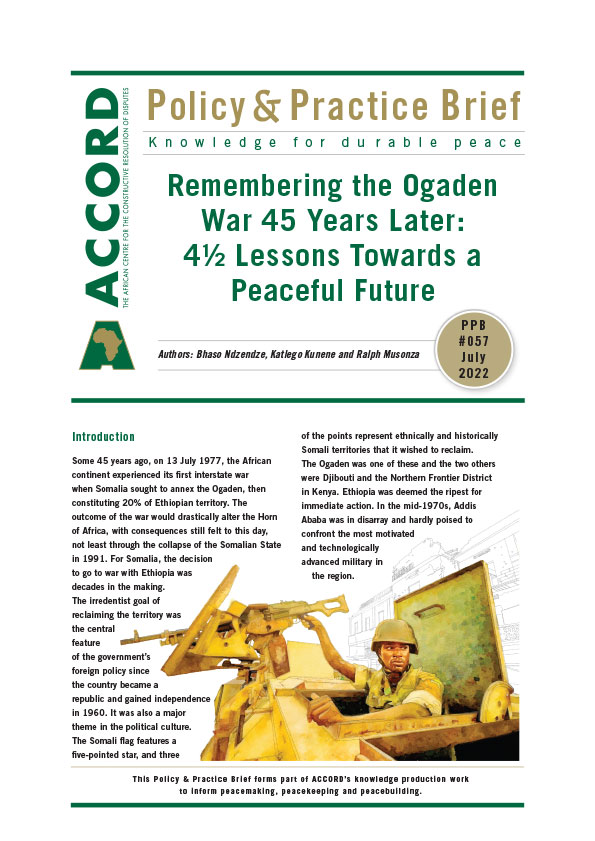Pursuant to these discussions: I have become enchanted by the wild Cuban-Soviet proposal of a federation of socialist countries around the Red Sea, consisting of Somalia, newly-socialist Ethiopia, South Yemen, Djibouti, and with some kind of autonomy for the Ogaden and Eritrea. This concept would allow the Soviets to reconcile their long-standing investment in Somalia while getting to have a new ally in Ethiopia, create a political settlement in Eritrea to avoid a quagmire, and create a united front to project Soviet influence and control in Arabia, sub-Saharan Africa, and the Red Sea.
The proposal was made by Castro at a meeting between Siad Barre and Mengistu. Siad Barre said that any federation that didn't provide for full Somali sovereignty over the Ogaden would be unacceptable. Mengistu countered that Somalia was a made-up country invented by the British and the Italians. Siad Barre left the table. The meeting lasted all of 15 minutes, and the dream of a Horn federation died.
Though it was basically unworkable, I find the concept to be highly compelling. My first thought is - What is such a federation called? The obvious (and likely) candidate would be "The Federation of the Horn" or some such, however this is boring, and also has the issue that there is no one word for Horn in the various languages. Not a huge issue, just as there is no one word for Europe in the European Union, though they get pretty close. My first thought was "Erythaea", as it embraces both sides of the Red Sea. But obviously this has the issue of being too favorable to the Eritreans, and would likely be rejected by the Derg.
What I ultimately settled on was "The Federation of the Peoples' Republics of
Punt." 'Peoples'" reflects both the socialist character of these states, but also the federations diversity, both across the federation and within its constituents (most especially Ethiopia). As to the name "Punt": As a real proper noun (unlike the Horn), it could be more or less identical across the constituent members, without elevating any one. Certain schools of history see Punt as not having referred to Africa or Arabia, or any one country, but being a general term that referred to both. Using such an ancient name would help to build a regional sense of identity, free from modern chauvinisms. The federation is not Muslim or Christian, it is not Somali or Ethiopian, not Amhara or Oromo: It is Punt.
I prepared two flags for this proposed federation. The first is again based on ancient history, namely that of Damot. Damot is the oldest society in the Horn for which we have eppigraphic records, though only a handful. These are in the Sabaic language, and seems to represent a Sabaean colony that mixed with the locals, and thus would become the forebearer for civilization in the horn of Africa. In these inscriptions there is a common refrain -
The refrain of "its red and its black," presumably referring to the differing skin tones of the Sabaeans and the natives, seems appropriate for a country like our Punt federation which seeks to unite a diverse group of people, and also calls attention to the region's common ancient heritage and origin.
So, my first flag has a black bar on its left (representing Africa to the west) and red on its right (Arabia to the east). A pale in the middle is dominated by a sickle and cog, an intentional call back to the crescent and disc symbol that was shared by ancient Yemen and Ethiopia, while also doubling as a secularized Islamic star and crescent. The sickle represents the predominantly agrarian and peasant nature of the federation. The cog with the red star set in it stands above it represents g the dream of development and industrialization that the federation will strive for. The five points of the star (its design taken from Ethiopia) represent Ethiopia, Somalia, South Yemen, Djibouti, and Eritrea. The green stands for fertility, and the federations Islamic heritage, and is also a shade found on many of the constituents' flags. The cyan stands for the sea and Christian heritage, and likewise is found on several constiuent flags.
View attachment 885553
However - The flag looks perhaps too pan-Arab, and I wonder if emphasizing the racial distinction between Africans and Arabs is really the best, even if it does so in an attempt to unify. So I prepared a second draft.
Here the black represents the African struggle for liberation, the green represents the Islamic/Arab struggle. The red field in the middle of course for socialism, but also for the Red Sea which runs through the middle of the country. As you can see, I am very attached to the Sabaean disc and crescent motif in a socialist lense, and will not change it. I set the star over a totally cyan field - cyan is represented in the flag of 4 of the federation members, and putting the star in it makes it like a star in the sky.
View attachment 885556
Curious what people prefer between these two flags, and if there are any suggestions for improvements.
